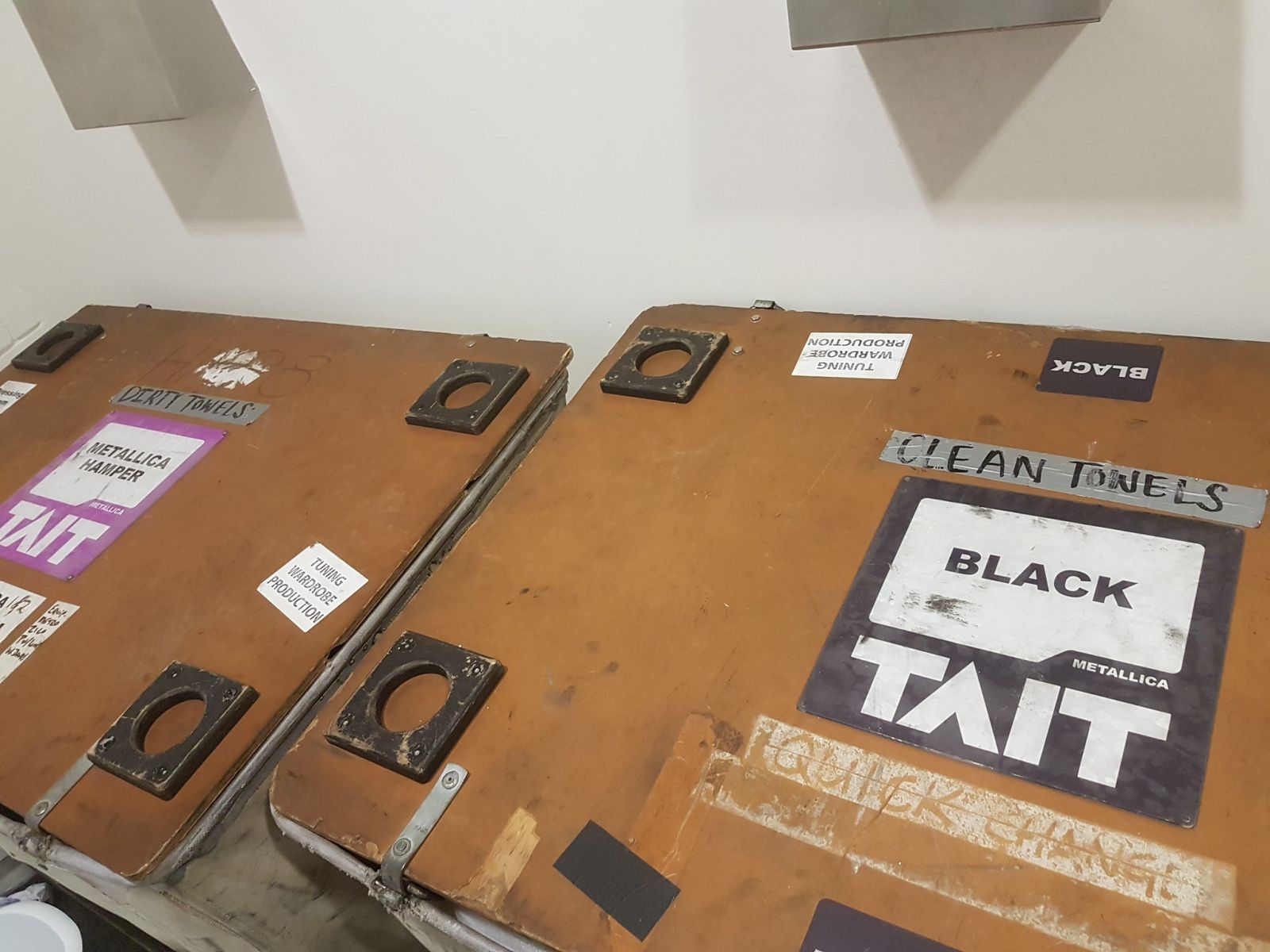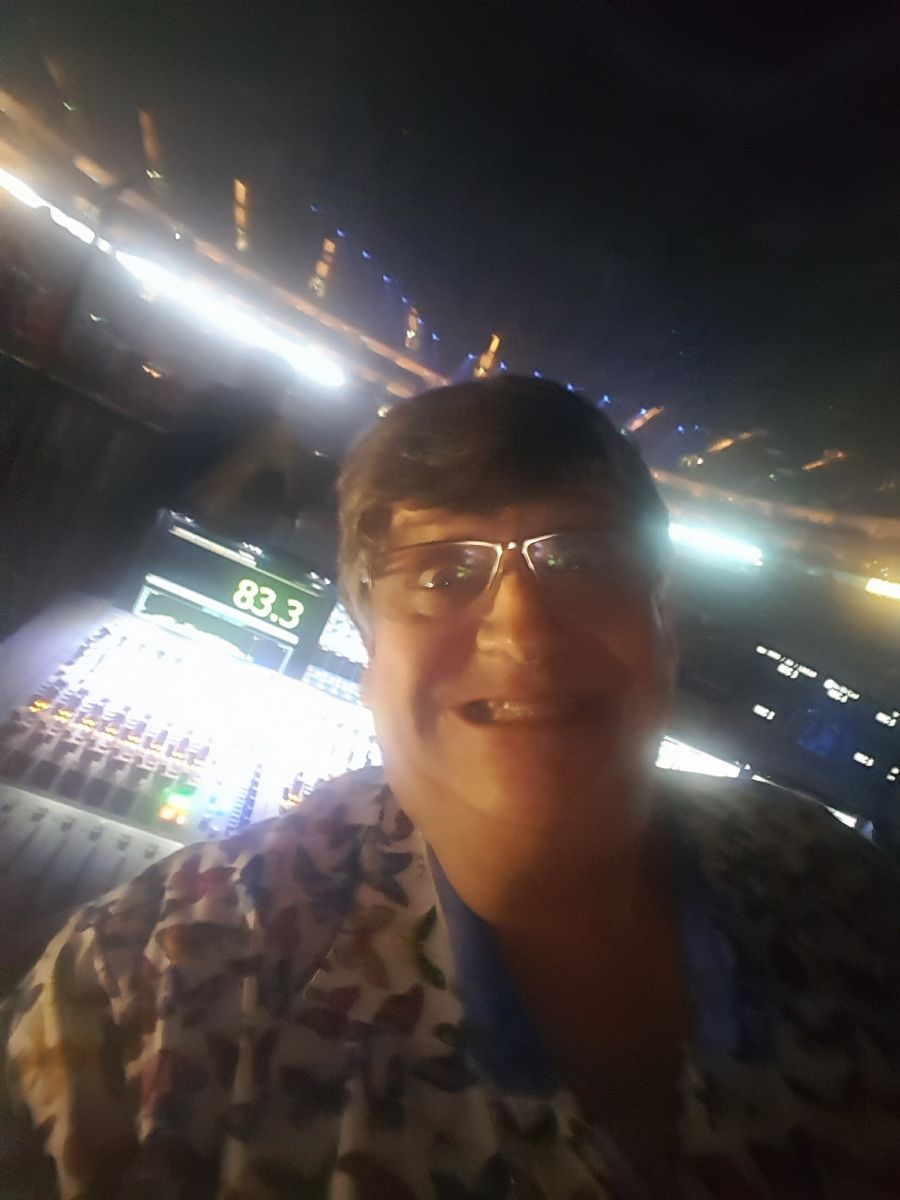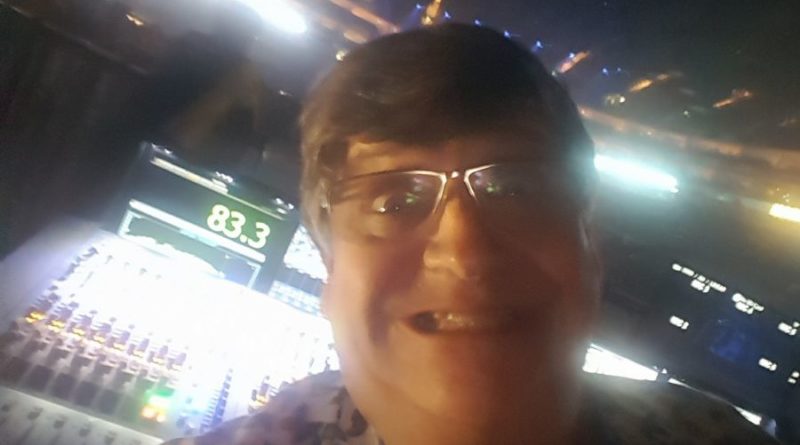Part 1: The Biggest HiFi In The World; MEYER SOUND – METALLICA RIG O2, LONDON 2017
PART ONE: MY ROCK ’N ROLL QUALIFICATIONS
It is a strange tale, how I got to work in the live music business. My degree course was a BSc. in Environmental Sciences at the University of East Anglia. This was the once-controversial university department that first started talking about climate change. It was the early 80s and environmentally, things looked awfully bleak back then. Thankfully, thirty years later, everybody is using the same vocabulary that we environmental scientists were, about carbon footprints and green issues now. And there have been some wonderful success stories. The very symbol of cuddly endangerment, the giant panda, the WWF’s (World Wildlife Fund) cute logo, is no longer endangered. Massive breeding programs, along with enforced reconnection of territory islands of habitat have worked wonders.
Anglers never stop complaining but our rivers are filled with more fish, including perch, than ever, which were rare in the 1970s. And despite the fishermen also complaining about it, otters, once a symbol of a close to extinction British mammal, have now been seen in every single county of the United Kingdom.
Now one accident of geography of the UEA was its remoteness from civilisation. Our ‘ENTS’ venue, called the LCR, was a vital stop in the 1980s university rock’n’ roll touring circuit. Thing was, we were one of only four colleges or universities that would have the calibre of bands play that we did. Most tours, after Norwich, would be playing in what was then called the Hammersmith Odeon the very next night. To British gig goers, that old cinema is a venue of legends. They call it The (brand here) Apollo today.
I remember looking in the LCR during the load-in one day, as four articulated lorries emptied their guts into our small venue. (It was for The Cure) Massive boxes on wheels. Great stacks of aluminium, in shapes like a big silvery construction kit. Fat bales of black drapes. Huge reels of wire on big wooden drums, meant for connecting telephone exchanges… and loudspeakers. Cavernous, beaten up wooden boxes, with their frayed plywood edges, overpainted in layer upon layer of thick black paint. Odd lumpen cabinets that looked like an overgrown Phillips electric razor, with the curved metal mesh grille on the front. Some covered in raggedy fuzz. The boxes that went on the top looked like a widemouthed frog. With a great big mouth and eyes that looked like silver bullets. Racks of rickety tin ‘PAR’ lighting cans, some black, some shiny silver, trundled in frames to hang on the aluminium Meccano-like trussing. Oddly colourful squares of wrinkly gelatine, blackened and crispy in places, falling out as they were moved about. AVO lamp dimmer racks in big wheeled flight cases that took four men to lift.

And the people that worked with this stuff were so cool and fascinating to this suburban teenager. They came in two main flavours, after the band and the tour manager. You could always tell who the tour manager was because he had the most passes hanging round his neck and had the air of the most important person about them. But yes, ‘lampeys’ and ‘noise boys’ were what they called each other disparagingly back then. I rapidly realised that I was a noise boy.
That one day had me gripped and I applied to join the UEA Entertainment Committee. Being a member of ENTS meant kudos, free gig entry and much coolness. But work was expected.
Each tour goes out with staff for the lighting and the sound as described. Each truck has a driver whose job is to get involved with the loading and unloading of the gig. However, to this very day a large slice of pure Stone Age technology is required… humans to hump stuff. Being a venue humper, is still a ‘thing’. You need warm bodies to trundle even those posh flight cases on wheels into the venue and take the lids off. To be a good one, you need to have a degree of instinctual understanding of things like moment of inertia and centre of gravity. If you did, you were thought of as useful. If you didn’t, you’d never work more than once, since you could end up responsible for really hurting someone.
I was big enough to push a bus – and did once as the broken down thing was obstructing the roundabout near uni. I asked the driver if I could help. At first incredulous, he allowed me to try and a tiny bit of gradient in my favour allowed me to lean in, strain until my tugboat -like thighs (scuba fin swimming did that back then…) got it moving. Twenty yards later, the astonished driver thanked me nicely. In an odd kind of a way, I applied a kind of laziness to my efforts as a humper. I was big enough, ugly enough and capable enough to work alongside the truck’s driver as he emptied his trailer, all the way to the dancefloor. I don’t know if that is what all truck drivers call the bit where the trailer sits on top of the tractor unit’s big greasy swivel. But it is what all of the rock’n’ roll truckers called it. Being on top of the back wheels of the rig doing the pulling, this is where the great big heavy amplifier racks were placed. Once you had emptied the truck of all of the speakers, you got to the wall of amp racks. This was years before Class D. Nowadays an amplification technology that is respected and used in the highest of fidelity systems. It was developed for pro audio use, by a man called Bob Carver in the USA, specifically to reduce the trucking weight of professional public address systems.
I ended up with shoulders which I thought were well well hench! Not quite Lou Ferrigno, but lumpy with hamburger… and all because working inside the truck meant I had to do plenty of lifting but very little walking to and fro! Laziness!
Doing it in reverse late at night after the gig was a little more hard-core than poncing around in the afternoon sunshine. I had become a bit more useful and learned how to coil a cable. And how the human arm is exactly the right length, such that if you let go of a microphone lead plug (an XLR as they are called) when you get to the end of a PROPERLY coiled cable, by accident as you reel it on in as quick as can be done, it will swing down and clip you neatly and quite hard in the testicles.
Years of gigs at UEA, meant that I had heard a lot of different kinds of public address technology. These big speakers excited the hell out of me. One PA company called Texserv from Brummie land, arrived with these two dirty great boxes on wheels. Each had four huge plywood flanges on butterfly clips. They were placed on the floor on their sides with these four flanges forming a horn mouth that it would take twelve adult men standing up, to obstruct! Funny enough, when these Earthquake Bins as they called them, were running, there was a little empty space in front of them. That little area in front of a public address system on the ground at ear-level, where the punters cannot stand, I came to call “The Cone Of Respect”.
After I left UEA, I used my experience to get work as what was called “Third Man” on PA systems. I had long since wanted to become the engineer that, like Phil Jones used to say, ‘plays the band’. (Phil was a mentor and was dB Hire’s boss: 20Hz bass bins in 26ft folded horns was our thing.) Mixing monitors, or the individual mixture of sound that each musician on stage requires, was the pathway to becoming FOH – Front Of House engineer. “What’s the difference between a monitor engineer and a toilet seat?” “One only has to cope with one load of sh** at a time…”

I did some proper training, installed a recording studio in Brixton, was in charge a major conversion of 11,000 ft.² of basement into a rehearsal studio, and ran another rehearsals complex for a good long while. I drove one of two small vehicles on a jazz rock tour of Germany. I drove 5,000 miles of autobahns, in five weeks. In a Toyota Hiace three speed stick shift, with the gear stick on the steering column. That was when I decided musicians were some of the most fascinating people in so many ways, more than their music.
It’s like a disease, some have it worse than others.

